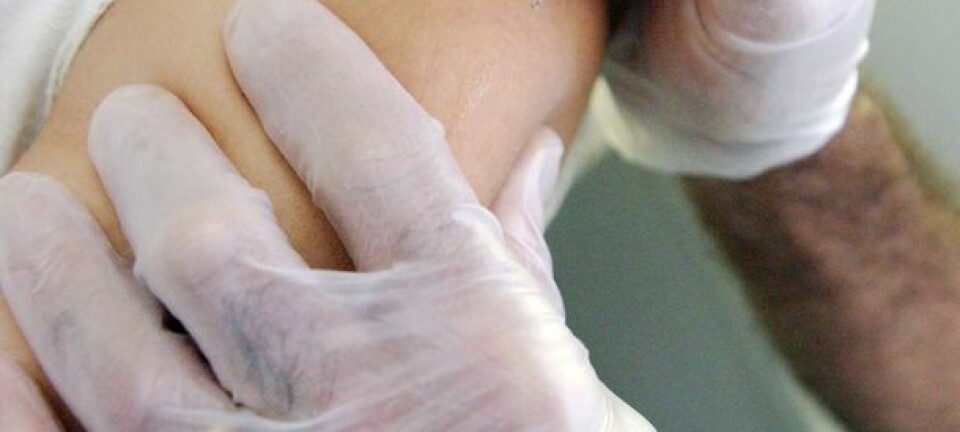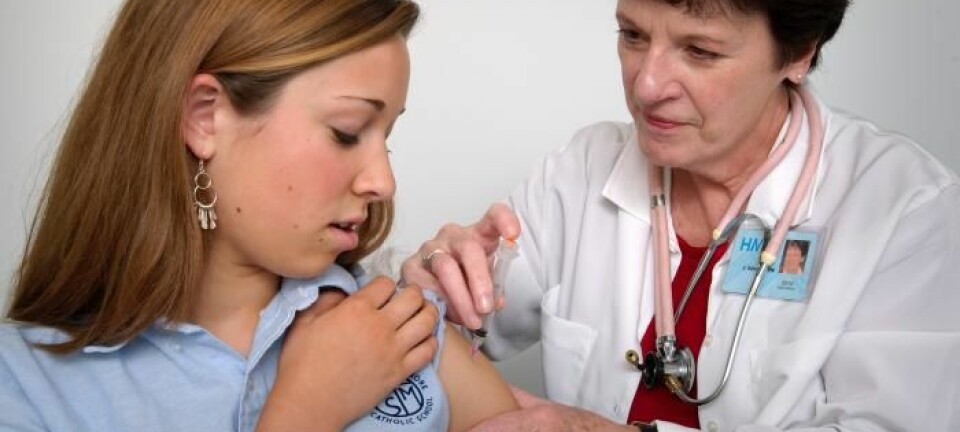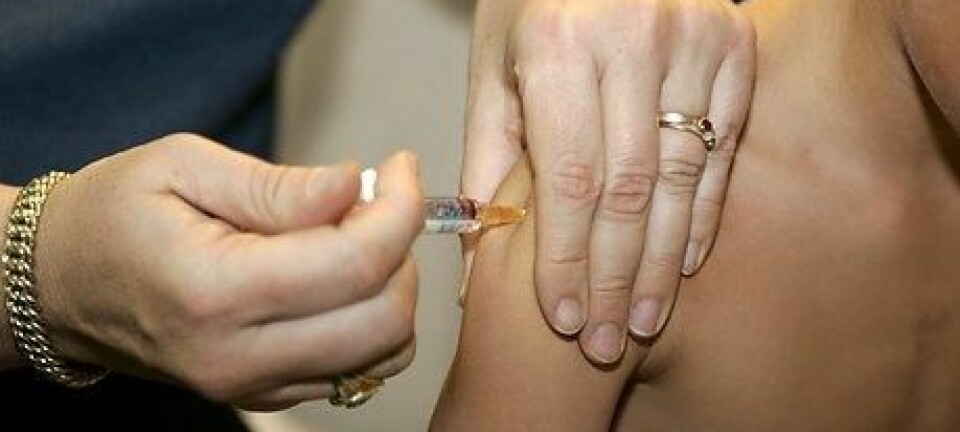
MMR vaccine: Science exposes the biggest myths
The MMR vaccine has been accused of many things, from containing mercury to triggering autism. Here we look at four of the most serious claims and separate fact from fiction.
Out of all our medical achievements, vaccines have had some of the largest impacts on our health. In fact, due to vaccination programs, many countries have irradiated a number of serious infectious diseases.
Nonetheless, more and more parents around the world choose not to vaccinate their children with the MMR vaccine. In Denmark this has resulted in 1 in 10 children not being vaccinated against measles, mumps, and rubella, and it has created a fierce debate.
In the US, rates of vaccinations are lower than in Russia and Zimbabwe, with an increasing number of measles cases being reported. As a result, the infectious and dangerous disease is spreading.
Recently, a child died in Germany, while in Denmark there has been a limited number of cases reported. Each time this occurs, it threatens to spread through other unvaccinated children which could cause a major outbreak.
Given the risks associated with opting out of vaccinations, we have taken a look at some of the most prominent anti-vaccine claims to separate the myths from the facts.
Myth 1: MMR vaccine contains Mercury
This is a very common misconception, but actually the MMR vaccine has never contained mercury, which is a neurotoxin. The misunderstanding arose because people often confuse vaccines with each other.
Mercury was used in childhood vaccines against whooping cough, and it was argued that it could be the cause of autism. Mercury is also found, though rarely, in some influenza vaccines. However, there is no link to autism.
The myth has arisen due to the use of thimerosal, an antimicrobial molecule which contains ethylmercury, but its use in vaccines ended globally in 1990.
Studies of autism in children show that removal of thimerosal from the vaccination program, had absolutely no effect on the occurrence of autism. If thimerosal was an important factor, then it would have resulted in a sharp drop in the number of autism cases in children vaccinated without thimerosal. This is not the case.
These kinds of studies have been carried out in many countries, and none have demonstrated a correlation between autism and thimerosal.
"There is more mercury in a can of mackerel in tomato sauce, than in a vaccination shot," says Jan Pravsgaard Christensen, professor of infectious immunology at the University of Copenhagen.
Claim 2: MMR vaccine causes autism
The now infamous myth that the MMR vaccine causes autism stems from a single fraudulent study published in 1998. It was in fact, withdrawn by the journal when it was revealed that the lead author Andrew J. Wakefield had manipulated with the study. He subsequently lost his medical license.
In the paper, Wakefield and colleagues claimed to show an overlap between the MMR vaccine and autistic behaviour in children. They published their findings in the prestigious scientific journal Lancet, despite significant flaws in the study. For example, the study was only based on 12 children, which is no way near representative of the entire population.
Wakefield held a press conference and recommended that parents should avoid the MMR vaccine until scientists had figured out exactly what was going on. The following media storm spread his message around the world: the MMR vaccine causes autism. Meanwhile, scientists were questioning Wakefield’s research.
Researchers from around the world, including Denmark, searched for a convincing link between MMR vaccine and autism, but they found none. To this day, nobody has found any indication that autism is more common among vaccinated children than unvaccinated children.
Meanwhile, the British journalist Brian Deer discovered that Wakefield had applied for a patent for an alternative vaccine against measles and stood to benefit financially if the MMR vaccine was discredited.
In 2010, a study of scientific fraud showed that Wakefield had manipulated the data. He lost his license, and the Lancet withdrew the article.
Nevertheless, Wakefield is still considered a martyr in some anti-vaccine circles, and his message has never completely gone away.
According to Christensen, the myth is still present in the minds of the public.
A big problem is that the MMR vaccine is typically administered around the same time that symptoms of autism would also typically appear in children.
"You may find that your child is vaccinated at the doctor, and 14 days later, it looks like they may have autism. So people start to put two and two together, but the cause and the link is not there," says Christensen.
Whilst the cause of autism remains elusive, doctors and scientists do not suspect the MMR vaccine.
You can still read the infamous retracted article in the lancet journal.
Claim 3: MMR vaccines are full of chemicals that are bad for our health
"Yes, as a layman it [the amount of chemicals] looks dramatic, but none of them are dangerous," says Christensen.
Concerns about 'dangerous chemicals' in the MMR vaccine primarily relate to thimerosal, aluminium hydroxide, and formaldehyde. In fact, none of these substances have ever been used are in the MMR vaccine, though they are present in other vaccines.
However, as with thiomersal, the misunderstanding of these chemicals is so widespread that it is worth clarifying it here.
Formaldehyde is a carcinogen, so you might be surprised that it is actually a completely natural substance produced in our bodies. It is only dangerous in large amounts, and in much higher levels than are found in any vaccine. In fact, the body typically produces more formaldehyde during the time spent reading this article, than any vaccine contains.
Aluminium hydroxide has a strong reaction with skin, resulting in lumps (granulomas) and inflammation, but this is actually a good thing. Aluminium hydroxide acts as an adjuvant in the vaccine. In effect, it stimulates the immune system and helps ensure that the patient’s immune response reacts appropriately. What may appear as a problem actually shows that the vaccine has worked correctly.
"It's an inert substance that is not in any way dangerous," says Christensen. "It is also why we use it in our cookware instead of nickel, which we used in the old days."
Claim 4: MMR vaccine is artificial and does not work. Children should have the disease to strengthen their immune systems
The active ingredients in the MMR vaccine are the live viruses (measles, mumps and rubella virus) -- so in a way, the MMR vaccine infects you with the measles virus when administered.
This is why some experience a measles rash as a side effect. The reason why you do not contract full-blown measles is that the viruses are weakened so that the immune system can fight them quickly.
Crucially, having the vaccine allows the immune system to get to know the enemy, i.e the virus. A vaccinated person is then prepared and can quickly mobilize "defence troops" to fight the disease if exposed to it later in life.
The MMR vaccine offers protection against measles for as long as if you had had the disease itself.
According to Christensen, Denmark has administered the MMR vaccine for almost 30 years. He thinks that if it is still effective after so long, then it probably offers lifelong protection.
However, the vaccine does not work on everyone. It fails in around 1 in 1000 vaccinated individuals who still get sick. What you need to remember is that so long as it works in the other 999 cases, then they limit the spread of virus by neither getting sick themselves nor passing the virus on to others.
"It may well be that the disease gives a slightly better immunity to the vaccine, but you must remember that you also add all the other risks associated with having the natural infection," says Christensen.
-------------
Read the original article in Danish on Videnskab.dk.
Translated by: Catherine Jex











